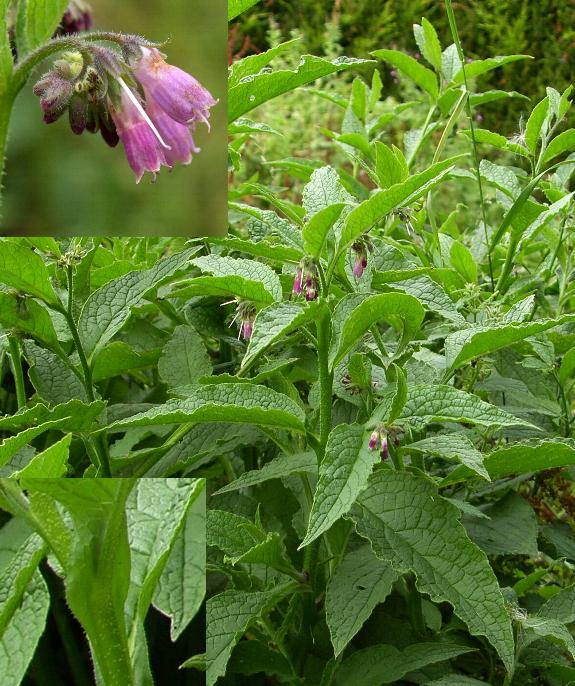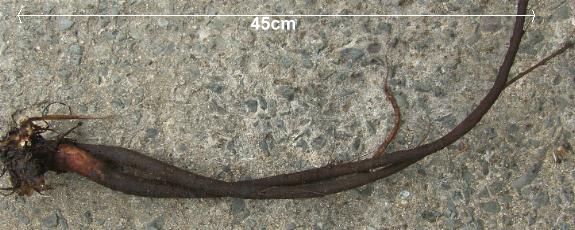Perennial, member of the Boraginaceae Family. It is a hybrid of Common Comfrey (S. officinale) and Rough Comfrey (S. asperum). An escapee from cultivation it is now naturalised throughout the British Isles, found on roadsides, wood margins and on waste ground. It can be up to one metre in height. The lance-shaped leaves are bristly and a distiguishing feature for this hybrid is the pair of short wings which extend down the stem below the axil for a few centimetres (see lower inset) - the wings are continuous on the stems of Common Comfrey and absent on Rough Comfrey. The purplish-blue flowers occur from June to August arranged in cymes, borne in the upper leaf axils. The deep, succulent rhizomes make this a difficult plant to uproot and it will regrow from pieces left behind. Other plants with similar leaves include Borage, Common Comfrey, Tuberous Comfrey, Foxglove and Green Alkanet Follow these links for further details on Weeds, Weed Removal and Weed Prevention. |
  |